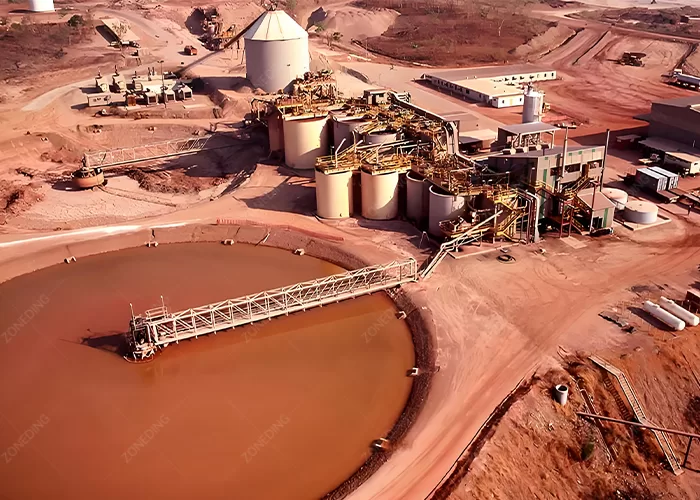全站搜索
Search the entire website
Search the entire website
The gold heap leaching process is often used to concentrate gold deposits with small ore bodies or low grades, or both, which cannot be developed and utilized by conventional methods. The main process is to crush low-grade gold ore to a certain particle size (or granulate), stock on a leak-proof bottom pad made of asphalt or plastic and other materials, use low-concentration cyanide, alkaline solution, non-toxic solvent and other solutions to spray the mine pile to dissolve the gold, and the gold-containing solution is percolated from the mine pile, and then the gold is recovered by activated carbon adsorption and other methods
Imagine you have a lot of rock with only a little bit of gold in it. Traditional gold processing often involves crushing the rock into a fine powder. Then you use complex methods like milling and flotation or carbon-in-pulp (CIP) or carbon-in-leach (CIL) to get the gold. This works well for rich ore, rock with lots of gold. But crushing everything fine and running these complex plants costs a lot of money. It uses a lot of energy and water. For low-grade ore, the cost of this processing can be higher than the value of the gold you get out. It is just not profitable. The traditional way is too expensive for rock that is mostly just rock.
Gold heap leaching offers a different path. It is much simpler and cheaper. Instead of grinding the rock into powder, you crush it only to a certain size. Then you pile it up on a special pad. You spray a weak chemical solution over the pile. This solution slowly trickles down through the rock. As it goes down, it dissolves the tiny bits of gold in the rock. The liquid that comes out the bottom has gold in it. You collect this liquid. Then you take the gold out of the liquid. This process uses less energy because you do not grind the rock as fine. It uses less water per ton of ore. The equipment needed for crushing, stacking, and pumping is less complex and cheaper than a full grinding and CIL/CIP plant. This lower cost is why gold heap leaching is an “economic choice” for low-grade ore. It makes it possible to get gold from rock that would otherwise be thrown away as waste. It turns waste rock into a source of profit.
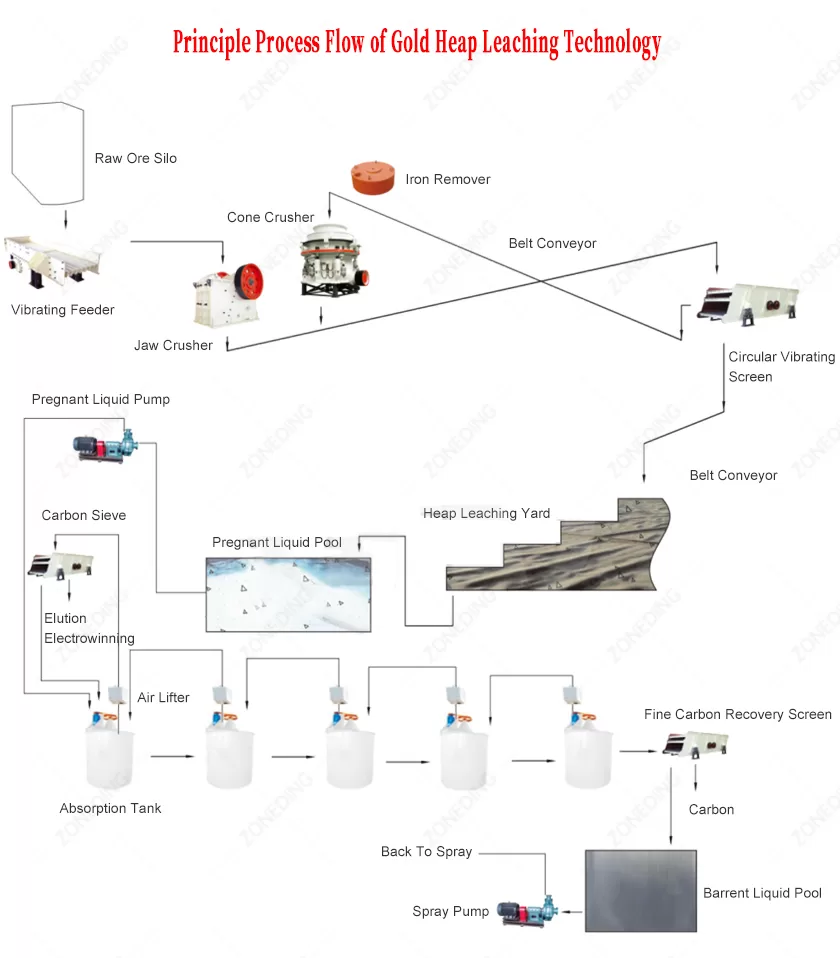
It might sound simple, like just piling up rock and pouring liquid. But gold heap leaching is a controlled process. It has several important steps. Each step helps get the gold out efficiently and safely. It is not magic, it is chemistry and engineering working together.
The main idea is to pass a liquid that dissolves gold through a pile of rock. This liquid is called the leaching solution. The rock pile sits on a special pad that does not let liquid through. This pad collects the liquid after it goes through the rock. The liquid that comes out has gold dissolved in it. This liquid is called “pregnant solution”. The liquid that goes into the pile is the “barren solution” (without gold). You spray barren solution on top of the pile. It trickles down. It collects gold. It becomes pregnant solution at the bottom. You collect the pregnant solution. You take the gold out of it. Then you can use the solution again. This process keeps repeating.
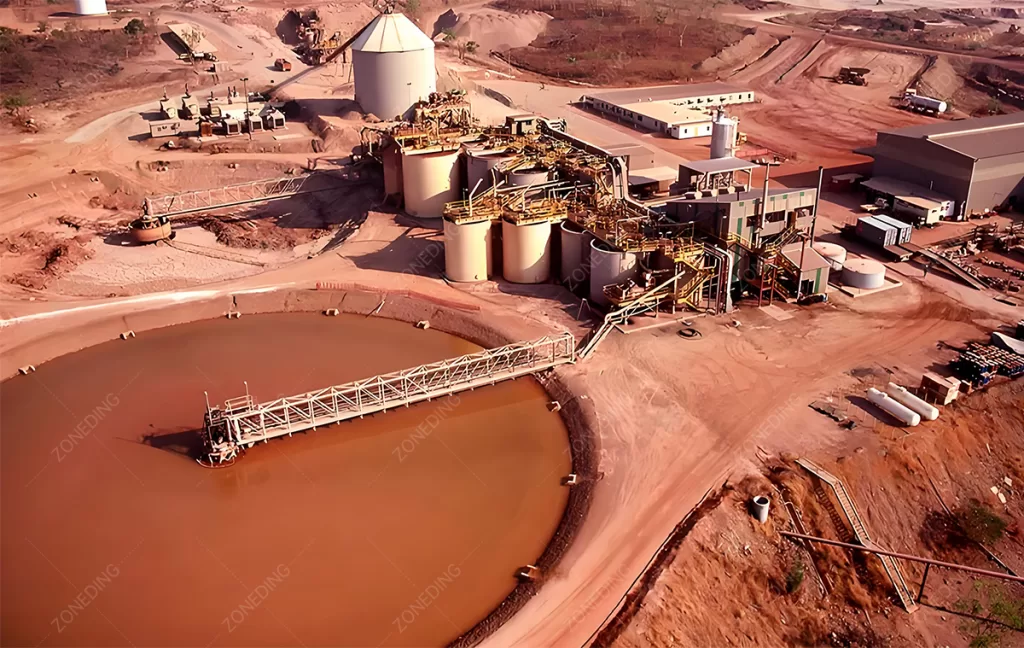
Not all gold ore is good for heap leaching. The “body type” of the rock matters. Heap leaching works best for certain kinds of ore. You need to test your rock to know if heap leaching is a good fit. This testing is called metallurgical testing. It tells you how much gold can be dissolved from your rock using this method.
Heap leaching is most suitable for low-grade gold ores. This means the amount of gold in the rock is small. If the ore is very rich, it might be better to crush it fine and use other methods to get a higher percentage of the gold out quickly. Heap leaching is also great for oxide gold ores. These are ores where the gold is often exposed or in minerals that break down easily. The leaching solution can reach the gold bits easily. If your ore is mostly sulfide minerals, it might need different processing before heap leaching. Sulfides can use up the cyanide or coat the gold particles. This stops the solution from reaching the gold.
The rock’s physical structure is also important. The rock needs to be permeable. This means the solution must be able to flow through the pile easily. If the rock has too much fine clay, it can block the flow. The solution will not reach all the gold. Agglomeration (making small lumps) can help with this problem for ores with fines. The size of the gold particles matters too. If the gold particles are very big, they dissolve very slowly. Heap leaching works best for fine gold particles spread throughout the rock. If your gold is coarse or locked inside sulfide minerals, heap leaching might not recover enough gold. You need to check these things. Your ore needs to let the solution pass through and the gold needs to dissolve well in the solution.
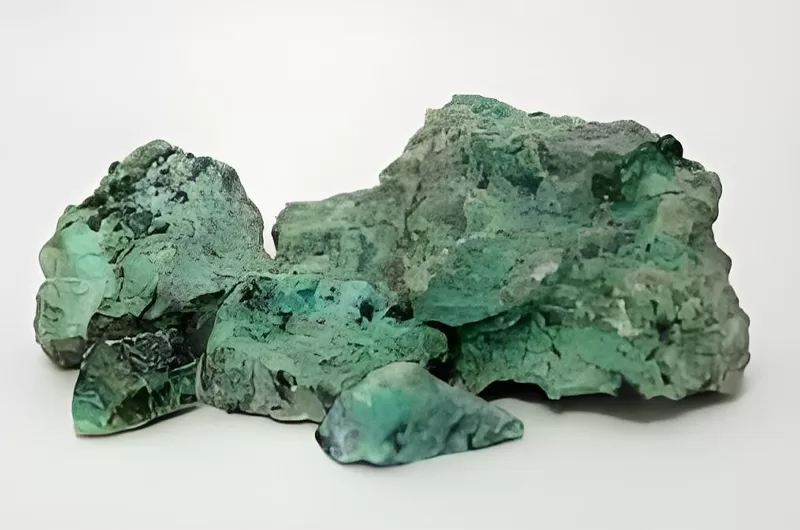
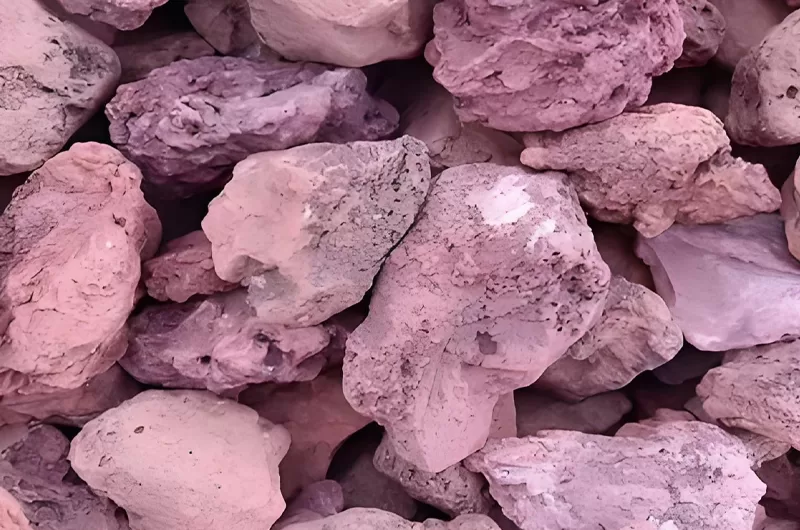
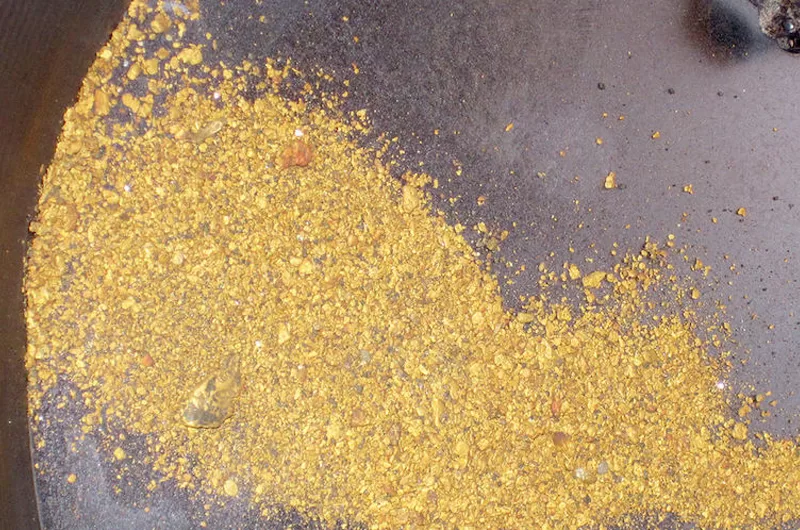
No, just crushing the rock is often not enough for good gold recovery in heap leaching. The steps you take before you build the pile are very important. They decide how well the leaching solution can reach the gold. They decide how fast the gold dissolves. Poor preparation means you leave gold behind. You lose money.
Crushing is the first step. You need to crush the ore to a specific size. The size depends on your ore. Crushing makes the gold particles more open to the solution. If the pieces are too big, the solution cannot get inside them easily. If the pieces are too small (too many fines), they can pack together. This blocks the flow of the solution. So, finding the right crush size is key. For some waste rock piles (dump leaching), maybe you do not crush at all. For most planned heaps, crushing to maybe 30-50 mm or even 9-19 mm is common. You need good Crushing Equipment like jaw crushers and cone crushers to get the right size distribution.
After crushing, many ores need agglomeration. This step is very important for ores that have clay or many fine particles. Agglomeration means taking the crushed rock and mixing it with a binder, usually cement or lime. You add a little water or weak solution. The material tumbles in a drum or on a conveyor belt. The fine particles stick to the larger pieces. They form small lumps or “agglomerates”. These lumps are stronger. When you stack the lumps in the pile, they create spaces between them. This lets the leaching solution flow through the pile easily and evenly. Without agglomeration, fines can create slow spots or blockages. This leads to uneven flow. Some parts of the pile get less solution. You get less gold out. Agglomeration is a “secret” step that greatly improves solution flow and gold contact. It directly impacts recovery rate.
Building the pile itself, called stacking, also matters. You need to stack the prepared ore evenly. You avoid making areas that are too dense or too loose. Equipment like stacker conveyors build the heap layer by layer. The way the heap is built affects how the solution moves through it. A well-built heap ensures even flow. This maximizes contact between the solution and the gold particles throughout the pile. These preparation steps are not just simple tasks. They are critical engineering steps. They need careful planning and the right machines.
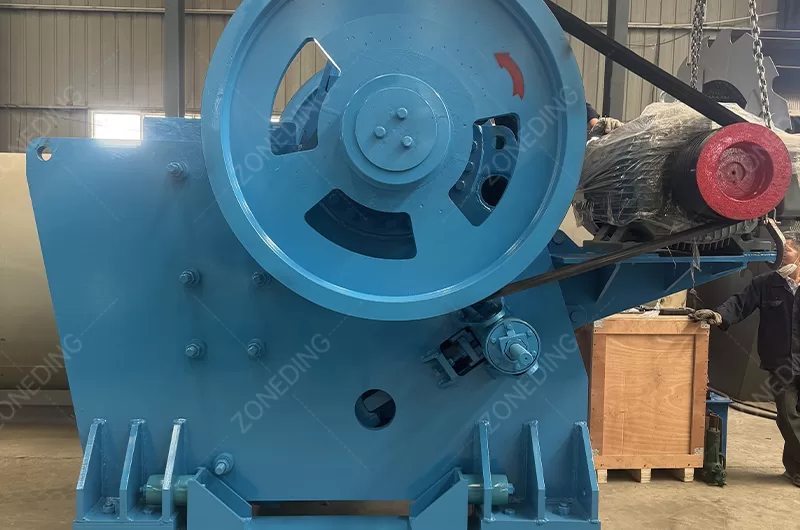
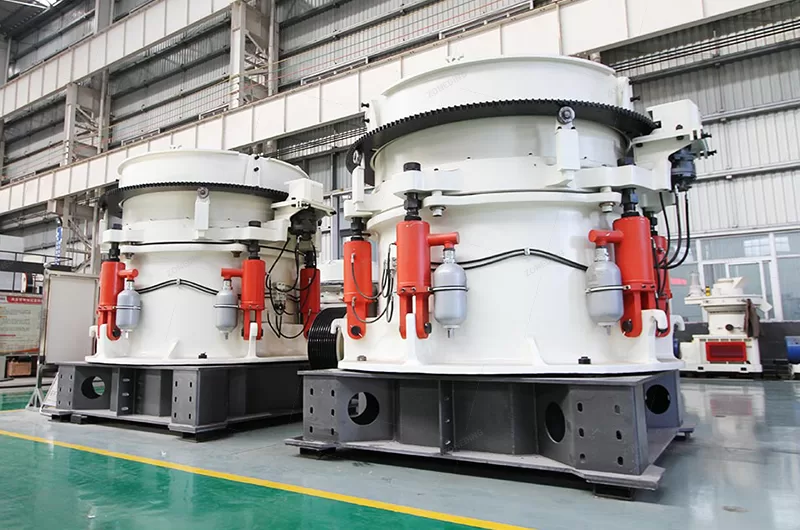
The core of gold heap leaching is using a chemical solution to dissolve the gold. The most common solution is a weak cyanide solution, usually sodium cyanide. Gold does not dissolve in plain water. It needs a chemical that can react with it and put it into the liquid. Cyanide does this very well. This is the “magic” or “high-tech” part, based on well-known chemistry.
When the cyanide solution trickles through the ore pile, it comes into contact with the tiny gold particles exposed on the rock surfaces. In the presence of oxygen (from the air spaces in the pile) and the cyanide, the gold metal (Au) reacts. It forms a complex ion: [Au(CN)2]-. This complex ion dissolves in the water. So, the gold moves from the solid rock into the liquid solution. This reaction is called cyanidation. It needs enough oxygen. It needs the right amount of cyanide. It also needs the solution to be alkaline (high pH), usually above 10. This high pH prevents the formation of hydrogen cyanide gas, which is very toxic. Lime is often added during ore preparation or to the solution to keep the pH high.
Many things influence how well this immersion process works. The strength of the cyanide solution matters, but you do not need a very strong one. A weak solution works and is safer. The contact time matters a lot. The solution needs enough time touching the gold particles. This is why the process takes weeks or even months. The solution flow rate through the pile is critical. It needs to be slow enough to allow the reaction to happen. It also needs to be fast enough to bring fresh solution (with cyanide and oxygen) and carry away the dissolved gold. The particle size of the crushed ore matters (as discussed before). The permeability of the heap matters (how well the solution flows). The temperature can affect the reaction rate, but heap leaching is usually done at ambient temperature. The mineralogy of the ore also influences it. Some minerals can consume cyanide or oxygen. This reduces the amount available to dissolve the gold. Understanding these factors and controlling them helps maximize the amount of gold dissolved.
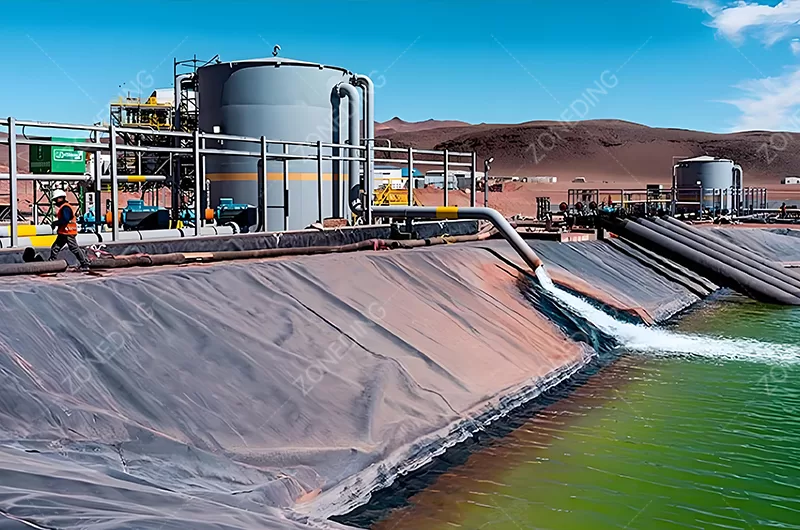
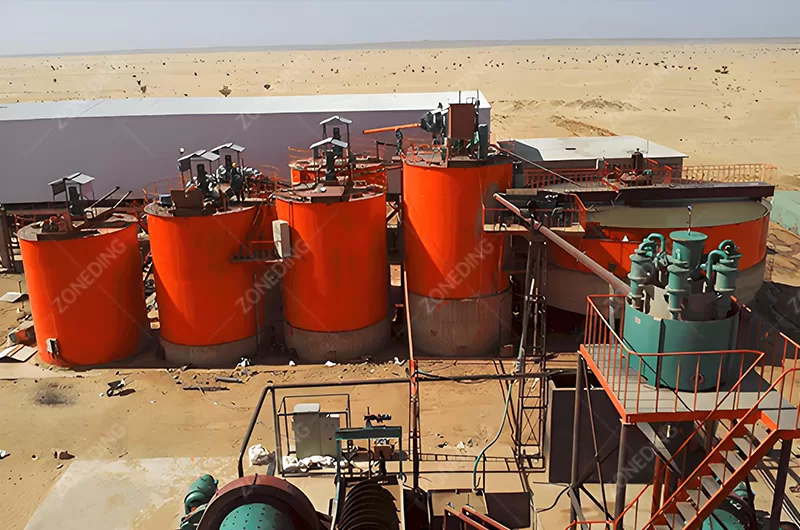
After the leaching solution goes through the ore pile, it has gold dissolved in it. This is the “pregnant solution”. It might not look different from the solution you started with, but it contains the valuable gold. Now you need to get the gold out of this liquid. There are two main ways to do this in heap leaching: using activated carbon or using zinc powder.
One common method is activated carbon adsorption. Activated carbon is a special form of carbon. It has a very large surface area inside its pores. The dissolved gold complex ([Au(CN)2]-) is attracted to the surface of the carbon. You pass the pregnant solution through columns filled with activated carbon granules. As the solution flows through, the gold sticks to the carbon. The solution coming out has much less gold in it. This is the “barren solution” which can be sent back to the heap. When the carbon is full of gold, you remove it from the columns. Then you use a strong hot chemical solution (elution) to strip the gold off the carbon. The gold is now in a much smaller volume of liquid. Then you process this rich liquid further to get solid gold. Activated carbon is like a sponge for gold in the solution.
Another method is zinc powder precipitation. In this method, you add zinc dust to the pregnant solution. Zinc is more reactive than gold. When zinc is added, it pushes the gold out of the cyanide complex. The gold metal then drops out of the solution as a solid powder. This method is often done in a process called Merrill-Crowe. You also need to remove oxygen from the solution before adding zinc, usually by pulling a vacuum. The solid mixture of gold and zinc powder is collected by filtering the liquid. Then you treat this solid mixture (smelting) to remove the zinc and get pure gold.
Which method is better for you? Activated carbon is generally simpler to operate and handle the solid carbon. It is often preferred for large operations. It can handle solutions with some solid particles. Zinc precipitation (Merrill-Crowe) can be more efficient at removing the last bit of gold from the solution, getting a very “barren” solution. But it needs a very clear solution (no solid particles). It also uses zinc and needs more careful handling of the zinc powder. The choice depends on the size of your operation, the cleanness of your pregnant solution, and your specific technical and economic factors. Both methods work well to get the gold out of the liquid.
You might hear about CIL (Carbon-in-Leach) or CIP (Carbon-in-Pulp) methods for gold recovery. These are also common. They use cyanide and activated carbon, but they process a fine slurry (rock mixed with water). Heap leaching is different. Understanding the pros and cons helps you decide which method is better for your specific ore and situation.
Heap leaching is usually much cheaper to build (lower capital cost) than a CIL/CIP plant. You do not need expensive grinding mills or large tank houses with agitators. The equipment for crushing and stacking is less costly. This is a big advantage for low-grade ores where the total amount of gold recovered might not justify a high initial investment. Operating costs can also be lower because you use less energy for grinding and less overall water. It can be simpler to operate.
However, gold heap leaching usually has a lower gold recovery rate than CIL/CIP. Because the rock is not ground into fine powder, the cyanide solution cannot reach every single gold particle. Some gold remains locked inside the larger rock pieces. CIL/CIP can often recover 90-98% of the gold. Heap leaching recovery rates are often 60-85%, sometimes higher for very favorable oxide ores (like 80% mentioned for Crawford project oxide ore). The process also takes much longer. CIL/CIP takes hours or maybe a day or two in tanks. Heap leaching takes weeks to many months for the solution to pass through the pile and dissolve the gold. So, you get your gold money slower with heap leaching.
Also, heap leaching needs a lot of land for the pads and piles. CIL/CIP plants take up less space. CIL/CIP is better for ores that are not suitable for heap leaching, like those with lots of sulfides or clay that cannot be agglomerated well. So, heap leaching is great for low-grade, permeable, oxide ores when you need a lower upfront cost and faster money is not the absolute top priority. CIL/CIP is often better for richer ores or those with complex mineralogy when you need maximum recovery quickly and have the budget for a larger plant.
| Feature | Gold Heap Leaching | CIL/CIP | Meaning for You |
|---|---|---|---|
| Capital Cost | Lower | Higher | Cheaper to build initially. |
| Operating Cost | Can be Lower (Energy, Water) | Higher (Grinding energy, chemicals) | Can be cheaper to run day-to-day. |
| Recovery Rate | Lower (e.g., 60-85%) | Higher (e.g., 90-98%) | You get less gold from each ton of rock. |
| Process Time | Weeks to Months | Hours to Days | You get gold slower. |
| Ore Suitability | Best for low-grade oxide, permeable ore | Can handle higher grade, more complex ore | Works for rock other methods cannot afford to treat. |
| Land Use | Needs Large Area | Needs Less Area | Requires a lot of space for piles. |
| Heap leaching is cheaper to start and run for specific ores but gets less gold over a longer time. |
Using chemicals like cyanide means you must be very careful about the environment. Gold heap leaching involves large amounts of solution. Managing this solution and the used rock (tailings) is critical for environmental safety. Governments have strict rules to protect water and land. Achieving “green production” means designing and operating the heap leach facility responsibly.
The most important environmental control in gold heap leaching is the liner system under the ore pile and ponds. This is a special layer (usually made of thick plastic or geomembrane) that is impermeable. It acts like a bathtub liner. It prevents the cyanide solution from leaking down into the soil and groundwater. A good liner system is built carefully. It often has multiple layers, including clay and gravel layers, and leak detection systems. This liner captures all the solution that trickles through the heap. It collects it in pipes that lead to storage ponds. This stops pollution.
Managing the solutions in the ponds is also key. You have pregnant solution (with gold) and barren solution (recycled). You also have storm water from rain. The ponds must be large enough to hold all these liquids, even during heavy rain. The ponds also need liners to prevent leaks. After all the gold is recovered from a heap, the remaining rock still contains some residual cyanide. The solution in the heap and ponds also contains cyanide. Before you can close the site, this cyanide must be treated or destroyed. This process is called cyanide detoxification. Common methods involve adding chemicals like hydrogen peroxide or sulfur dioxide to break down the cyanide into less harmful substances. This treatment happens for the solutions and sometimes by rinsing the heap with clean water or a weak chemical to remove residual cyanide.
Another important part is water management. In many places, water is scarce. Heap leaching uses less water than milling, but it still uses water. You need to recycle the process water as much as possible. Good pond management and minimizing evaporation help. Monitoring is also critical. You need to regularly test the groundwater around the site. You test the process solutions and the treated water. This confirms that the containment systems are working and that no harmful chemicals are escaping. Good design, careful operation, and strict monitoring help ensure that gold heap leaching is done safely and meets environmental standards. This makes it a responsible way to recover gold.
Once you decide on gold heap leaching, you want to make it work as well as possible. You want to get the most gold out (high recovery rate). You want to get it as quickly as possible (shorten time). You want to spend the least amount of money doing it (lower cost). There are several “secrets” or optimization techniques to help you achieve these goals.
Optimizing the ore preparation is a top priority. Getting the crush size just right for your specific ore is key. If it is too coarse, recovery is low. If it is too fine, flow is bad. You need to find the sweet spot through testing. If your ore has fines or clay, make sure your agglomeration is effective. Check the quality of your agglomerates. Are they strong enough? Do they let solution flow through easily? Adding the right amount and type of binder (cement or lime) is important. The type of Crushing Equipment and the way you operate it directly impacts particle size distribution and feed for agglomeration.
Controlling the leaching process itself offers more chances to improve. The solution flow rate onto the heap matters. Too fast can cause channeling (solution finds easy paths and misses other areas) or overflow. Too slow means it takes forever. Adjust the flow rate to match the heap’s permeability. Try different irrigation methods. Drip irrigation or wobbler sprinklers can provide more even coverage than simple sprinklers. The strength of the cyanide solution can be optimized. Using a slightly stronger solution might speed up leaching, but it also costs more and is riskier. Find the lowest strength that still gives good recovery. Maintaining the correct pH is crucial. Check the pH of the solution on top of the heap and at the bottom. Make sure it stays high enough (above 10.5).
Finally, heap design affects performance. How high should the pile be? Taller piles mean more pressure on the bottom layers, which can reduce flow. Shorter piles might need more land. Multi-layer heaps, where you leach one layer, then add another on top and leach again, can be an option. How you manage the ponds and solution recirculation impacts efficiency. Minimizing evaporation from ponds saves solution and chemicals. Understanding how all these factors interact is the ultimate “secret”. It requires careful monitoring, testing, and making smart adjustments based on data. Investing in good control systems and skilled operators helps a lot.
Setting up a gold heap leaching operation needs more than just chemicals. You need the right machines to handle the rock. You also need technical know-how. This is where a good equipment supplier comes in. They help you get from the rock in the ground to the gold you can sell.
First, you need machines to prepare the ore. This starts with crushing. You need Crushing Equipment. This can include a Jaw Crusher for primary crushing (taking big rocks from the mine) and then Cone Crusher or Impact Crusher for secondary and tertiary crushing to get the desired particle size. You also need screens (Vibrating Screen) to separate the rock into size ranges and send oversized material back for more crushing. You might need a Vibration Feeder to move the ore steadily into the crusher. If your ore needs agglomeration, you will need an agglomeration drum or conveyor system.
Next, you need equipment to build the heap. This includes stacking equipment, often conveyors that move the crushed and agglomerated ore from the preparation area to the heap pad and build the pile layer by layer. You also need the materials and equipment to build the impermeable pad liner system. For the leaching part, you need pumps to move the solution from the ponds to the top of the heap. You need piping and a sprinkler system (or drip system) to distribute the solution evenly over the pile.
Finally, you need a gold recovery plant. This plant contains the equipment for either activated carbon adsorption (carbon columns, elution system) or zinc precipitation (Merrill-Crowe plant with filters and vacuum system). You also need ponds for storing pregnant, barren, and process solutions. You need equipment for cyanide detoxification and water treatment if required before discharge or reuse. A successful project requires that all these pieces of equipment work together smoothly.
Technical support is just as important as the machines. You need help with designing the whole process flow based on your ore test results. You need help with selecting the right equipment sizes and types. You need engineering support for laying out the plant and the heap pads. You need support during installation and commissioning to make sure everything is set up correctly. Training for your staff on how to operate and maintain the equipment is also vital. A good supplier like us at ZONEDING MACHINE provides this full range of technical support. We do not just sell machines; we help you build a working gold recovery operation.
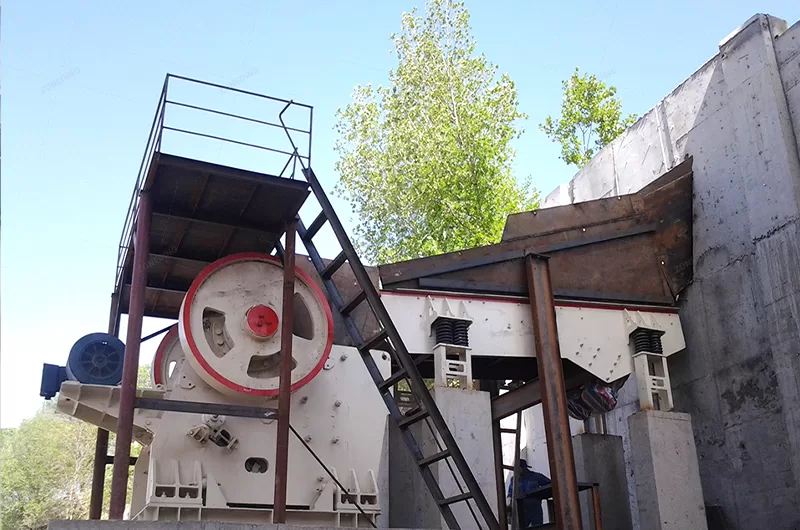
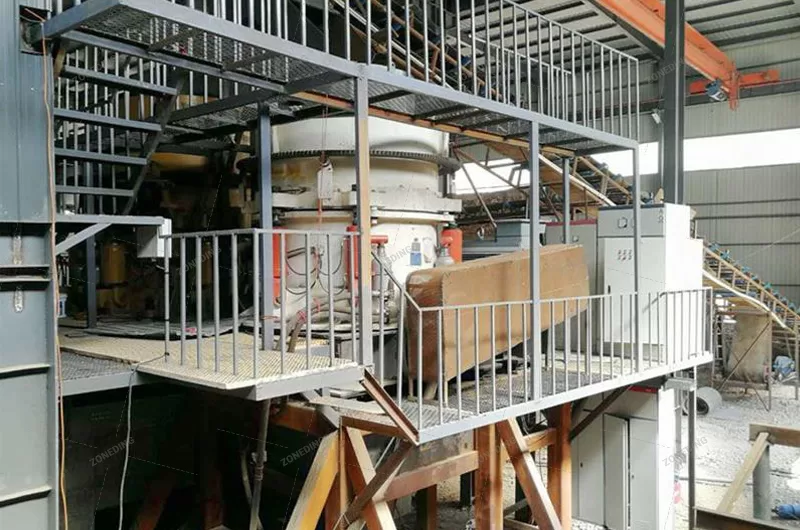
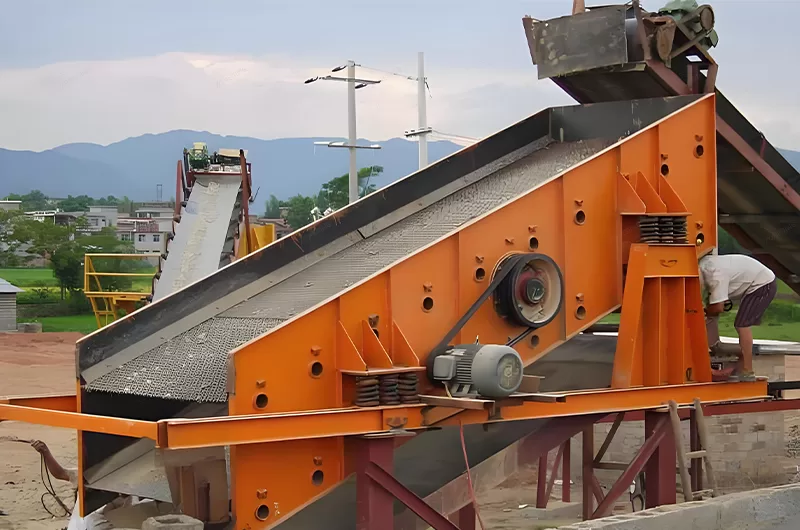
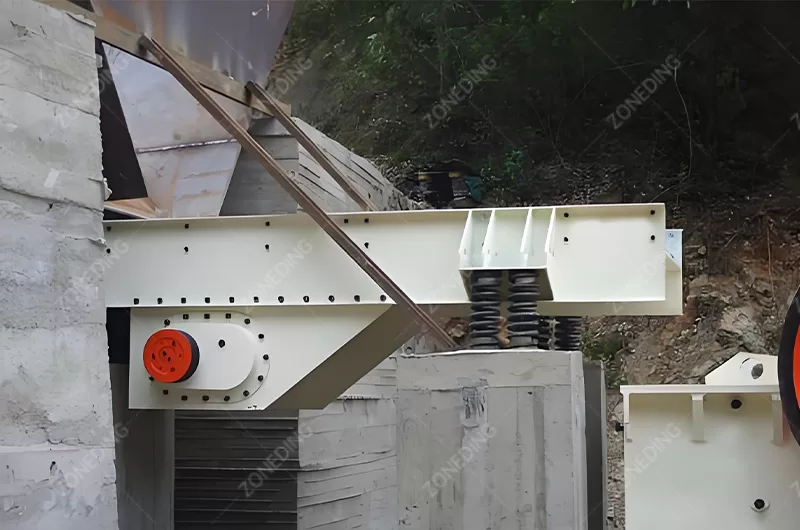
Question 1: Is heap leaching always cheaper for low-grade gold ore?
A: Yes, gold heap leaching usually has lower initial construction costs and can have lower operating costs compared to traditional milling and CIL/CIP for processing large volumes of low-grade ore.
Question 2: How long does gold heap leaching take?
A: The process time for gold heap leaching is long. It usually takes several weeks to many months for the solution to pass through the pile and dissolve the gold effectively.
Question 3: Can I use heap leaching for high-grade gold ore?
A: You could use heap leaching for high-grade ore, but you would likely lose a significant amount of gold. Higher grade ores are typically processed with methods like CIL/CIP or flotation to achieve higher recovery rates.
Question 4: Is cyanide safe to use in heap leaching?
A: Cyanide is toxic and must be handled with extreme care. Heap leaching operations use weak cyanide solutions and require strict safety protocols, impermeable liners, secure ponds, and detoxification processes to protect people and the environment.
